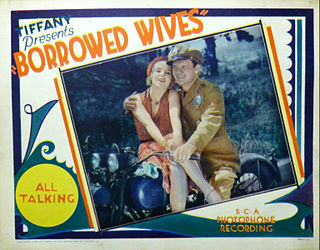
Rex Lloyd Lease was an American actor. He appeared in over 300 films, mainly in Poverty Row westerns.

Thomas Edwin Mix was an American film actor and the star of many early Western films between 1909 and 1935. He appeared in 291 films, all but nine of which were silent films. He was Hollywood's first Western star and helped define the genre as it emerged in the early days of the cinema.

William Nicholas Selig was a vaudeville performer and pioneer of the American motion picture industry. His stage billing as Colonel Selig would be used for the rest of his career, even as he moved into film production.

The Selig Polyscope Company was an American motion picture company that was founded in 1896 by William Selig in Chicago, Illinois. The company produced hundreds of early, widely distributed commercial moving pictures, including the first films starring Tom Mix, Harold Lloyd, Colleen Moore, and Roscoe "Fatty" Arbuckle. Selig Polyscope also established Southern California's first permanent movie studio, in the historic Edendale district of Los Angeles.

Lester H. Cuneo was an American stage and silent film actor. He began acting in theatre while still in his teens.

Josephine M. Workman better known by her stage name, Princess Mona Darkfeather was an American actress who starred in Native American and Western dramas. During the silent era of motion pictures, from 1911 to 1917, she appeared in 102 movies. She is best known for her role as Prairie Flower in The Vanishing Tribe (1914).
Edendale is a historical name for a district in Los Angeles, California, northwest of Downtown Los Angeles, in what is known today as Echo Park, Los Feliz and Silver Lake. In the opening decades of the 20th century, in the era of silent movies, Edendale was known as the home of most major movie studios on the West Coast. Among its many claims, it was home to the Keystone Kops, and the site of many movie firsts, including Charlie Chaplin's first movie, the first feature-length comedy, and the first pie-in-the-face. The Edendale movie studios were mostly concentrated in a four-block stretch of Allesandro Street, between Berkeley Avenue and Duane Street. Allesandro Street was later renamed Glendale Boulevard.

Myrtle Stedman was an American leading lady and later character actress in motion pictures who began in silent films in 1910.
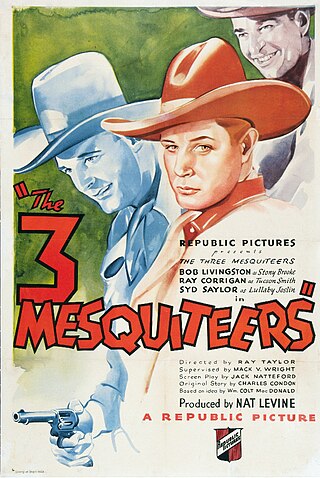
The Three Mesquiteers is the umbrella title for a Republic Pictures series of 51 American Western B-movies released between 1936 and 1943. The films, featuring a trio of Old West adventurers, was based on a series of Western novels by William Colt MacDonald. The eponymous trio, with occasional variations, were called Stony Brooke, Tucson Smith and Lullaby Joslin. John Wayne, who played Stony Brooke in eight of the films in 1938 and 1939, was the best-known actor in the series. Other leads included Bob Livingston, Ray "Crash" Corrigan, Max Terhune, Bob Steele, Rufe Davis and Tom Tyler.

The Telltale Knife is a 1914 American short silent Western film starring Tom Mix and directed by William Duncan.

The phrase Wonder Horses refers to the equine companions of cowboy heroes in early Western films. What makes these horses different from others that have appeared on the silver screen is their rise from trusty steed to a genuine screen personality. A number of horses have enjoyed such fame, often receiving equal or second billing with their human costars.
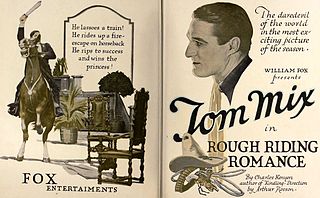
Tom Mix (1880–1940) was an American motion picture actor, director, and writer whose career spanned from 1910 to 1935. During this time he appeared in 270 films and established himself as the screen's most popular cowboy star. Mix's flair for showmanship set the standard for later cowboy heroes such as Gene Autry and Roy Rogers. His horse Tony also became a celebrity who received his own fan mail.
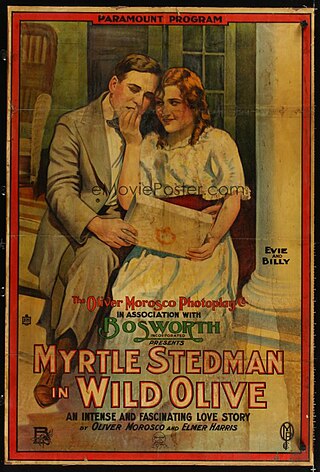
The Wild Olive is a lost 1915 American drama silent film directed by Oscar Apfel and written by Elmer Blaney Harris, Basil King and Oliver Morosco. The film stars Myrtle Stedman, Forrest Stanley, Mary Ruby, Charles Marriott, Edmund Lowe and Herbert Standing. The film was released on June 24, 1915, by Paramount Pictures.
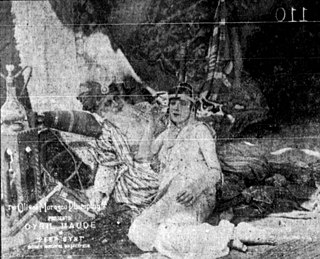
Peer Gynt is a surviving 1915 American fantasy silent film directed by Oscar Apfel and Raoul Walsh and adapted from the Henrik Ibsen play by Oscar Apfel. The film stars Cyril Maude, Myrtle Stedman, Fanny Stockbridge, Mary Reubens, Mary Ruby and Winifred Bryson. The film was released on September 16, 1915, by Paramount Pictures.

The Whistle is a 1921 American silent drama film directed by Lambert Hillyer and written by May Wilmoth, Olin Lyman and Lambert Hillyer. The film stars William S. Hart, Frank Brownlee, Myrtle Stedman, Georgie Stone, Will Jim Hatton, and Richard Headrick. The film was released in April 1921, by Paramount Pictures. A print of the film is in the Library of Congress.

Terror Trail is a 1933 American Western film directed by Armand Schaefer, written by Jack Cunningham, and starring Tom Mix, Naomi Judge, Arthur Rankin, John St. Polis, Frank Brownlee and Raymond Hatton. It was released on February 2, 1933, by Universal Pictures.
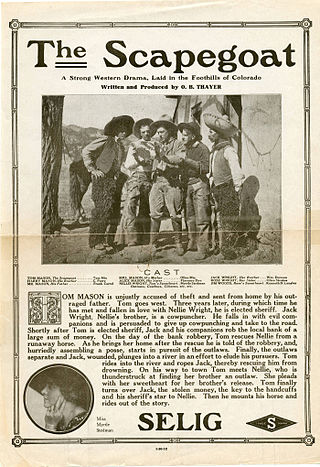
The Scapegoat is a 1912 American short silent Western film directed by Otis B. Thayer and starring Tom Mix.

Louella Maxam was an American actress who performed in over 50 silent films from 1913 until 1921. She was often cast in comedies and Westerns, most notably being identified in 1915 as a "leading lady" in a series of shorts starring Tom Mix, who during the silent and early sound eras was promoted as the "Cowboy King of Hollywood". Later, she was a female lead in other films for various studios, including several productions featuring another early cowboy star, Franklyn Farnum. Following her departure from acting, Maxam worked in county and municipal government in California, including service with the Burbank police department, where in 1943 she was hired as that city's first "police woman".
The Cattle Thief's Escape is a 1913 American short silent Western film directed by and starring William Duncan. It co-stars Rex De Rosselli and Myrtle Stedman while Tom Mix appears in a supporting role. The film was produced by the Selig Polyscope Company and released through the General Film Company. It was released as split reel with Elephant as a Workman, Rangoon, India.
Goldie Colwell was an American film actress and journalist who starred in more than 80 films during Hollywood's silent era. She was Tom Mix's leading lady in many Selig westerns.

















